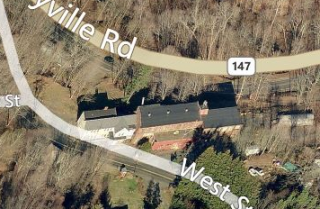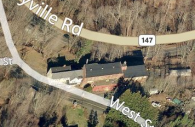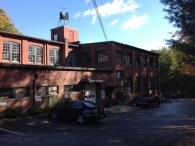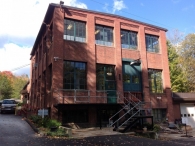Mill Record Middlefield
RETURN TO ‘FIND MILLS’Disclaimer: Content for these properties was compiled in 2014-2017 from a variety of sources and is subject to change. Updates are occasionally made under Property Information, however the Connecticut Trust for Historic Preservation (dba Preservation Connecticut) makes no representation or warranty that the information is complete or up-to-date.
- Complex Name (Common)
- Lyman Gun Sight Co.
- Complex Name (Historic)
-
- Lyman Gun Sight Co.
- Lyman Co. Inc.
- Address or Location
- 140 and 147 West Street, Middlefield
- County
- Middlesex
- Historic Designation
- Associated Mill Community

- Historic Information
Companies Associated w/Complex
- Lyman Company Inc. 1901-c.1978
- Lyman Gunsight Co. c.1879-1901
- Lyman Products Corp. 1977-
- Lyman Products for Shooters, Div. of The Leisure Group 1969-1977
Use (Historic)
Largest Documented Workforce
n/a
Historic Narrative
In 1860, David Lyman and W. M. Terrell, having formed a partnership, began manufacturing clothes wringers in a factory on the edge of David Lyman’s farm. David’s son, William Lyman (1854-1896), began using space in his father’s mill to work on design ideas around 1860. By 1875, he had received a patent for bow-facing oars, and in 1881 he had a patent for a self-adjusting ship’s mast (both of which he tested on nearby Beseck Lake). Lyman’s primary interest however was in improving gun sights, and he received his first gun flip-sight patent in 1879, and founded Lyman Gun Sight. With increased demand for his gun sights, he moved his operation in 1880 to an 18 x 24 foot building at the core of the extant mill complex on West Street. Lyman held seventeen sight patents, including for an ivory bead front target sight in 1885 and for the Winchester repeating rifle sight in 1893. After William Lyman’s death, the Lyman Company incorporated in 1901, and was headed by William’s brother Charles starting in 1917. The company expanded its product line in 1925 with the acquisition of the successful Ideal Products Reloading Tool line. Other product areas included the black powder firearms line. Business increased sharply with military orders for metallic gun sights and parts during World War II. The company began to study ballistics in the 1950s, testing on sight, and published their own data starting in the 1961 edition of the Lyman Handbook. Family owned since its inception, the business was sold in 1969 to The Leisure Group from Los Angeles and was renamed Lyman Products for Shooters. In 1977, it was sold again and renamed Lyman Products Corp. Shortly thereafter, Lyman Products Corp. moved to a new facility in Middletown.
- Architectural Information
Number of Existing Buildings
Six (6) primary blocks.
Dates of Construction
c.1880, 1899, 1903-7, 1940
Architect
n/a
Builder
n/a
Building Type
Architectural Description
The earliest two-story wood-frame building, 24' x 18' with gable roof, dates to c.1880. The first addition, a two-story wood-frame structure off its west side, was built c.1899. The main three-story brick factory loft, 103' x 42', was built c.1903-07, and the two-story brick loft with metal frame windows at the easternmost end was built c.1940. A 1950s single-story concrete block addition obscures the south side of the c.1903-07 building. To the south across West Street is a single-story concrete block garage built in 1921 for storage; it became the ballistics lab in the 1950s.
Exterior Material(s)
Structural System(s)
Roof Form
Roof Material
Power Source
n/a
Condition
Good
Condition Notes
All portions of the building are in generally good condition.
- Property Information
-
Specific Location
Two parcels totaling 11.82 acres on knoll at SEC of intersection of West Street and Baileyville Road (Route 147)
Individually listed on the State Register of Historic Places.Adjacent To
n/a
Exterior Visible from Public Road?
Yes
Parcel ID / Assessor Record Link
Acreage
2.11; 9.71
Use (Present)
- Sources
-
Form Completed By
Renée Tribert
Date
n/a
Bibliography
- Lyman Centennial Journal 1878-1978 (Middlefield CT:Lyman Publications, 1978).
- Roth, Matthew, et al, Connecticut: An Inventory of Historic Engineering and Industrial Sites (Washington DC: SIA, 1981).
- State Register Nomination on file at office of SHPO, Hartford CT.
- Representative View(s)Click on image to view full file







